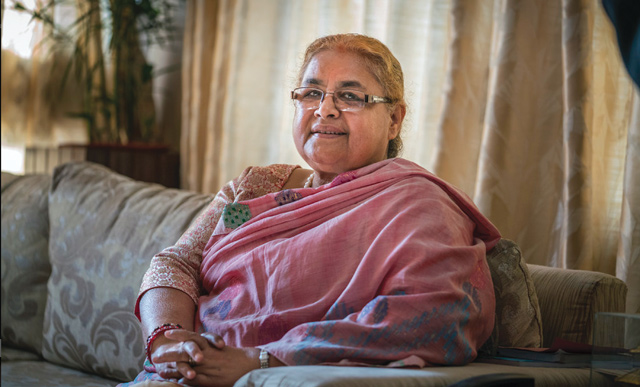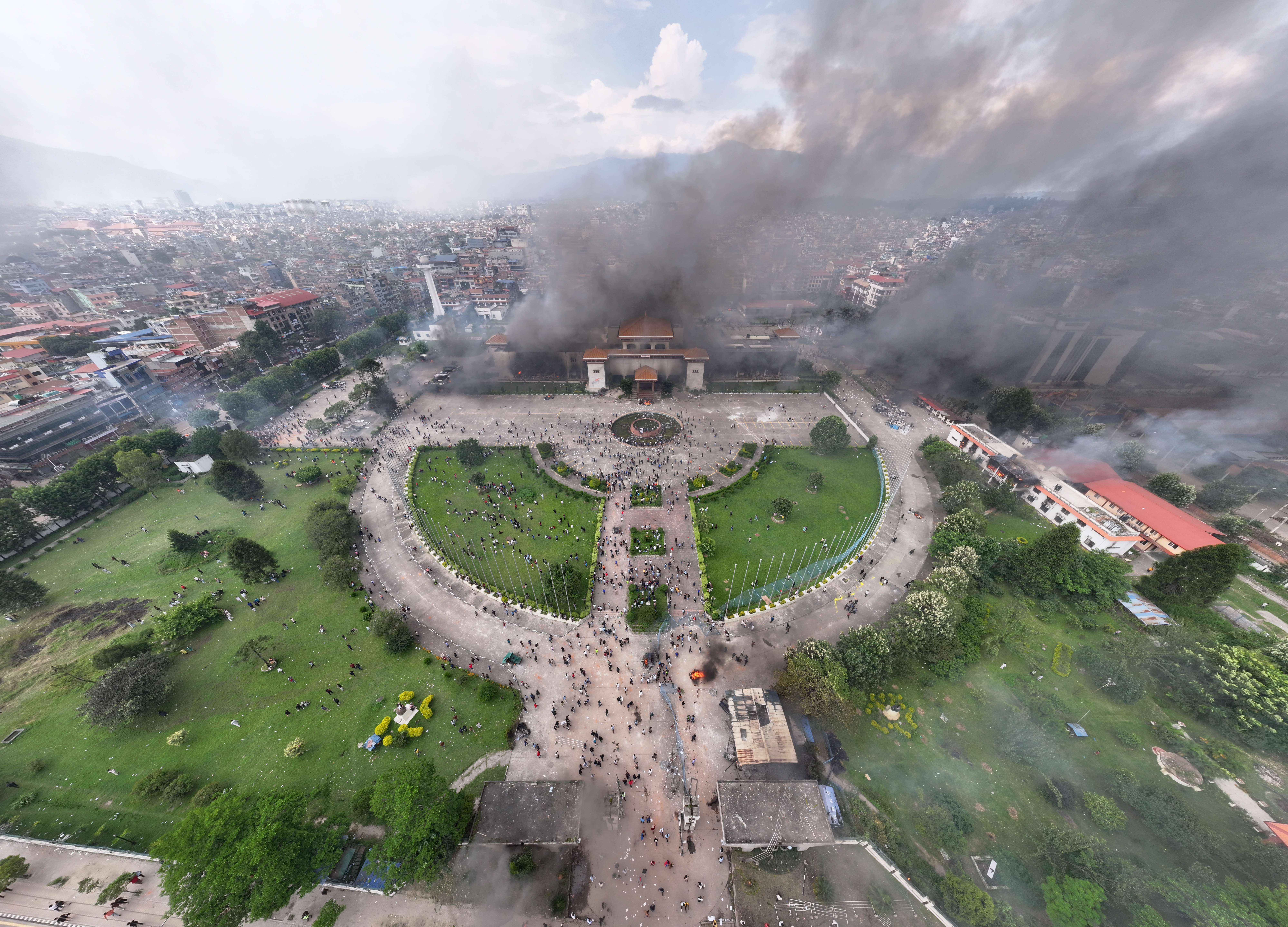What next, Nepal?
Youth protesters endorse candidacy of former Chief Justice Sushila Karki, but not all groups agreeAs this story is being uploaded on Wednesday evening, sloganeering is going on outside the gates of the Nepal Army headquarters in Kathmandu between various GenZ groups about who should be the caretaker prime minister.
The GenZ campaign includes Hami Nepal and several other groups that spearheaded the anti-government rally this week against corruption and neoptism. Thirty people died as the protests in Kathmandu turned violent on Monday and Tuesday.
After Prime Minister K P Oli stepped down on Tuesday, Nepal has existed in a power vacuum, with no one really in charge. The Nepal Army took over security management from Monday night, and President Ram Chandra Poudel appealed to Nepali youth to come to the negotiating table.
Thousands of GenZ youth held hours long discussions on Discord and other online fora on Wednesday, and voted to endorse former Chief Justice Sushila Karki to lead the transitional government.
The group informed Chief of Army Staff Ashokraj Sigdel about their choice, but he has also been meeting leaders of at least 12 other groups claiming to be the genuine GenZs. Among them are royalist and other groups that many saw as having infiltrated the GenZ rally on Monday in which 20 people were killed while trying to storm Parliament.

On Tuesday, disparate groups joined the arson and looting that ended up gutting Singha Darbar, the Parliament and Supreme Court buildings and attacks on party offices, media, schools and private residences across the country. The original GenZ disavowed involvement.
'Nepal's 2015 Constitution does not envision any transitional or emergency provisions to address a state of political and constitutional vacuum. For now, the President, per Article 273 of the Constitution, can exercise emergency powers in light of the current situation,’ wrote former National Human Rights Commissioner Mohna Ansari on social media on Wednesday evening.
The President can declare a state of emergency per Article 273 of the Constitution, but that must be endorsed by a two-third majority of Parliament within a month, after which it will be in effect for three months.
‘Former Chief Justice Sushila Karki is the best option to address the adverse circumstances prevailing in the nation. The President must heed the Constitution and take the next steps in a manner that is transparent, keeps the public informed, and is in the national interest,’ Ansari added.

The Gen Z movement itself appears fragmented and without distinct leadership, both before the anti-corruption protests on 8 September and in the aftermath of the two-day protests.
Various groups are said to have met or waited to meet the Gen Sigdel on Wednesday. The Army told others claiming to be GenZ and raising slogans against Karki’s candidacy to appear at the army headquarters on Thursday.
Nepalis had floated the names of some of Nepal’s more acceptable public figures to lead a caretaker government, including Kathmandu mayor Balen Shah. But Shah told the Army chief he endorsed Sushila Karki’s nomination.
The names of former NEA chief Kulman Ghising and ex-education minister Sumana Shrestha of the RSP had also been proposed.
Polls conducted on social media to gauge public sentiment show a significant number are open to Sushila Karki taking charge of a transitional government. Both Shah and Shrestha are not so keen, and are probably waiting to contest elections.
Meanwhile, Nepal’s young reform campaigners largely seem to reject the idea of handing leadership to RSP chair Rabi Lamichhane who was retrieved by supporters on Tuesday from Nakhhu jail after eight months of incarceration for embezzling depositers of cooperatives.
But even as GenZ held discussions with the Army chief to decide on the interim government, other interest groups have continued to engage as well. Erstwhile royalist businessman Durga Prasai, posted a photo of himself with Sigdel on social media and professed that he has 'no interest' in leadership and would accept whomever GenZ youth chose.
The job of the caretaker government, whoever leads it, will primarily be to hold free and fair elections for a new leadership which will then face the challenge of reestablishing Nepal’s democratic institutions.
“The course of events showed that the movement has gone beyond Constitutional remedy,” political analyst Krishna Khanal told BBC Nepali following erstwhile Prime Minister Oli’s resignation on Tuesday. “There needs to be a middle-ground solution that will be acceptable to the people who took to the streets while upholding the existing constitutional process.”
Various GenZ collectives have issued demands that include the dissolution of Parliament and the formation of a new civilian government, which analysts say are antithetical. Constitutional experts have suggested that the youth opt for a solution that allows for new leadership to move forward under the current Constitution.

One option, they say, is for the President to appoint any prime minister from the existing Parliament under Article 76(5) if all other measures fail, who would then have the authority to appoint up to 25 non-elected ministers for six months. This can be a way for that temporary leadership to hold elections within the mandated time frame. The existing Constitution can then be amended to accommodate the aspirations of the Nepali youth after the election.
But any conditions put forward by GenZ youth that requires a new Constitution might set Nepal back years, warn some experts. The 2015 Constitution was the result of nearly 10 years of negotiations and strife, and the formation of another charter will mean that Nepal will head into decades more of rotating governments and political instability.
For now, Nepali youth need to unite to decide by Thursday who leads the country into the next phase.
writer
Shristi Karki is a correspondent with Nepali Times. She joined Nepali Times as an intern in 2020, becoming a part of the newsroom full-time after graduating from Kathmandu University School of Arts. Karki has reported on politics, current affairs, art and culture.




